I’m very proud that we’ve has been selected by National Safe Skies Alliance Inc. (www.sskies.org) to create a comprehensive training resource for Airport Law Enforcement and Security Personnel. We are very fortunate to have put together a team of experienced Airport Law Enforcement/Security Management personnel. The SSi Team will be researching best practices and recommendations for a law enforcement/Security personnel training curriculum. A key objective will include creating curriculum that is scalable to a airport’s size, budget and needs. We will be reaching out to a number of airports seeking input from many stakeholders. Anyone wishing to share their best practices for Airport LEO/Security Personnel training, please feel free to reach out to via LinkedIn, Twitter DM or email. There are no better experts than found in this forum. Thanks Christopher Pheasant @Bill McAteer Don Zoufal @Duane McGray Scott Booth for rounding out the SSi TEAM. #training #research #airports #lawenforcement #securitymanagement
SSi Documenting the Emergency Training
Stay tuned for additional video updates as SSi begins its development of the airport-wide emergency training to protect all staff. Thanks for watching @WeTrainAirports
Residents rally against noisy air traffic
Citizens consider walkout, lawsuit
By Sara Hayden
Coastsiders and other Bay Area residents are banding together to combat air traffic noise wrought by the Next Generation Air Transportation System. The latest action follows in the footsteps of other communities across the United States that have found their voices are stronger together. They are getting a response from the Federal Aviation Administration.
FAA began to implement NextGen technologies and procedures in 2007 to modernize air transportation and increase safety, efficiency and predictability. In recent years, that’s come at the cost of residents who now live under rerouted flight paths. Some people argue that it’s actually decreasing safety by exposing them to airport noise and jet fuel particulate that has negative health impacts.
“Everyone all over the country is waking up to the same nightmare,” said Tony Verreos, of Brisbane. “It takes some time for people to get frustrated to a point where they do something about it.”
Now some are.
“I’m going to focus on suing the FAA because nothing else has worked,” said Verreos, who started a Facebook group called “STOP Jet Noise NOW! SFOAK North S.F. Bay Area.”
He’s working with other citizens to convince Bay Area cities such as his own, Pacifica, Daly City and Half Moon Bay to take the charge.
If a local lawsuit occurred, it would be one of more than 10 others across the nation regarding NextGen. The city of Phoenix won its case last August, which led to an agreement to redesign flight paths. The FAA also agreed to tweak flight paths around John Wayne Airport in Southern California, following individual lawsuits from Culver City, Newport Beach and Laguna Beach that were then consolidated as one case a year ago.
As cities consider action, residents of the unincorporated Midcoast don’t want to be ignored.
Erin Caslavka, of Montara, wanted to get involved when she realized there was little Midcoast representation at the SFO Airport/Community Roundtable, a committee to address noise impacts from San Francisco International Airport flights.
“I feel like we’re the redheaded stepchild. (Just because there’s no representative) doesn’t mean it’s not intrusive into our life as well,” Caslavka said
She started attending roundtable meetings and recording local flight traffic data from home. Over a two-week period in the fall, she counted 2,480 flights that passed over Montara from various airports in the area. Many exceeded the established noise threshold, and the bulk of them were from SFO.
At a Midcoast Community Council meeting, she encouraged people to direct their air traffic noise complaints to San Francisco International Airport at (650) 821-4736 or sfo.noise.
She agreed a lawsuit is worth a shot. “With a lot of lawsuits, you end up settling with the other party. Maybe that means you end up getting some of the demands we’re making to be implemented.”
Stanley Peng, of El Granada, said his goal was to raise awareness. He started a petition about a year ago that has since collected the signatures of more than 500 people calling for a ban from flying low over the Coastside. Peng works as a delivery driver for the Review.
Peng forwarded the petition to U.S. Rep. Jackie Speier, the FAA, local airports and others he wants to take notice.
“I even sent it to Donald Trump, the president of the United States. I don’t know if it (will get there),” Peng said. But he wants to try. “Hopefully I can make as much of a contribution all the way from Pacifica to Half Moon Bay … We just want to try our best to see if FAA would make any substantial change.”
Congressional representatives, including Speier, are working to ensure that the FAA adheres to implementing noise mitigation recommendations that came out of a report released in November. But relief can’t come soon enough for some.
Laslo Vespremi, of El Granada, is organizing a representative walkout at a roundtable meeting to send a message to the FAA.
“If the representatives of these 2 million people (from more than 20 communities) say enough is enough, notice will be taken,” he said.
Half Moon Bay Vice Mayor and SFO roundtable representative Harvey Rarback said he wouldn’t participate in a walkout without learning more first.
“There’s a lot of concerned people on the roundtable, but the structure is such that it doesn’t have the teeth to do much. I certainly want to find out more about this,” Rarback said.
Policy would require commercial ground transportation operators at airport to have permits
Commercial vehicles for ground transportation would be subject to permits and fines if City Council approves
By Kevin Canfield Tulsa World Mar 28, 2018 “It’s the Wild West out there.”
That’s how Tulsa International Airport CEO Mark VanLoh describes the scene at the airport’s curb during peak periods. With business growing, so are congestion, maintenance needs and service demands at the airport.
To address those issues and others, the Tulsa Airports Improvement Trust plans to require that all commercial ground transportation vehicles have permits.“We are hoping these permits will be able to allow our police officers to enforce the curb,” VanLoh said.
The permits would be issued by the Airports Improvement Trust, which oversees airport operations. The fine for operating without a permit would be $150.
“This is the only airport that I know of that does not have this policy,” VanLoh said. “I caught it about a year ago. … So it is one of the things on my agenda to get a policy so everyone is treated fairly.”
The Airports Improvement Trust approved a ground transportation policy in February.
VanLoh briefed city councilors on the policy on Wednesday, and they will vote on the issue next week. The City Council would have to amend the city’s airport ordinance to reflect the new policy and attendant fine before it could be enforced.
The permit fees will be determined by the trust once the council approves the ordinance. The airport already charges taxi, Uber and Lyft drivers $1 per trip.
VanLoh said he’s met with the city’s hotel/motel association to present a fee structure. Under that plan, hotels would be charged 50 cents per room per month. A 100-room hotel, for example, would pay $50 a month for the right to pick up guests at the airport.
“We have been giving them a long grace period to be sure everybody is on board before we really start cracking down,” VanLoh told councilors.
Airport parking services, limousines and businesses such as Turo — where individuals sometimes take their personal vehicles to airports and rent them to people getting off planes — would also be covered by the ground transportation policy.
“It’s crazy,” VanLoh said. “Technology is just out of control. We have to try to keep up with it and make sure our police officers can see something happening and know that a person is getting into a safe vehicle.”
VanLoh said it is not unusual for airports to use ground transportation policies and the revenue they generate to help maintain facilities.
“We don’t collect any taxes. We are self-supporting, and airports get some revenue from these permit fees from the people who use the airport,” he said. “It helps them pay for the roadway repairs, enforcement, signage — things like that.”
In the past, airports could build those costs into the fees they charged airlines to use the airport, but those days are over, VanLoh said.
“They’ve stopped,” he said. “We want to keep our costs to the airlines as low as possible so they keep on coming.”
Leaving Las Vegas? Dump your pot at the airport first
Leave it in an ‘amnesty box’
(CNN) – After spending time indulging in the pleasures of Sin City, tourists heading back home may need to leave a thing or two behind — like their weed.
The sale of recreational marijuana has been legal in Nevada since last summer, but pot is not legal at Las Vegas’ McCarran International Airport.
So to keep travelers from getting in trouble in the airport security line, big green bins — dubbed amnesty boxes — were set up a week ago outside McCarran, allowing people to toss their pot before catching their flight. Twenty of the boxes were installed at McCarran and its car rental facility, Henderson Executive Airport and the North Las Vegas Airport.
The bins are about the size of a mailbox, bolted to the ground, monitored and designed to keep what’s tossed in them inside the box. In addition to pot, the bins can also be used to drop off prescription drugs.
“We’ve had a variety of other things disposed of in the bins,” Christine Crews, McCarran airport’s public information administrator, told CNN. “For example, I was sent a picture of one of the bins containing pills, vape pens, rolled tobacco-looking products, prescription bottles and marijuana-infused drinks.”
These Are the Biggest Ways That 9/11 Changed Airport Security
Jess Bolluy February 05, 2018
- If you fly even infrequently, we don’t have to tell you that airport security has changed dramatically since 9/11. You have to stand in long lines. You deal with invasive screenings. Plus, you have to remember weird rules. And you have to find a way to stand on the good side of the many grumpy TSA agents. In fact, Condé Nast Traveler reported in 2016 that the U.S. had spent almost $100 billion to secure airports and airplanes since 9/11. And you’ll see the result of lots of that spending both at the TSA airport security checkpoint.
Read on to check out the biggest ways that 9/11 changed airport security forever.
1. Congress created the TSA
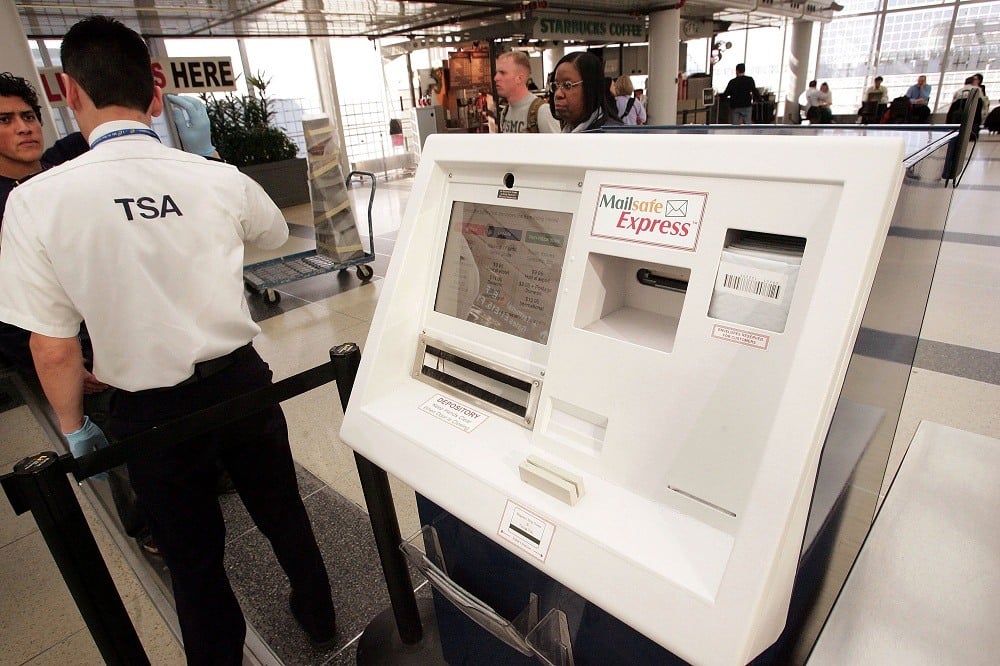 TSA is a relatively recent airport addition. | Scott Olson/Getty Images
TSA is a relatively recent airport addition. | Scott Olson/Getty Images
You might not realize it when your fate seems to rest in the hands of the TSA agents operating the security checkpoint. But the agency didn’t always exist. So it wasn’t always in charge of airport security.
Condé Nast Traveler notes that the law that created the Transportation Security Administration passed a couple months after 9/11. The agency’s arrival on the scene has led to some of the biggest and most lasting changes at airport security and beyond.
Next: The TSA separates this kind of traveler from the rest.
2. The TSA separates the ‘known’ travelers
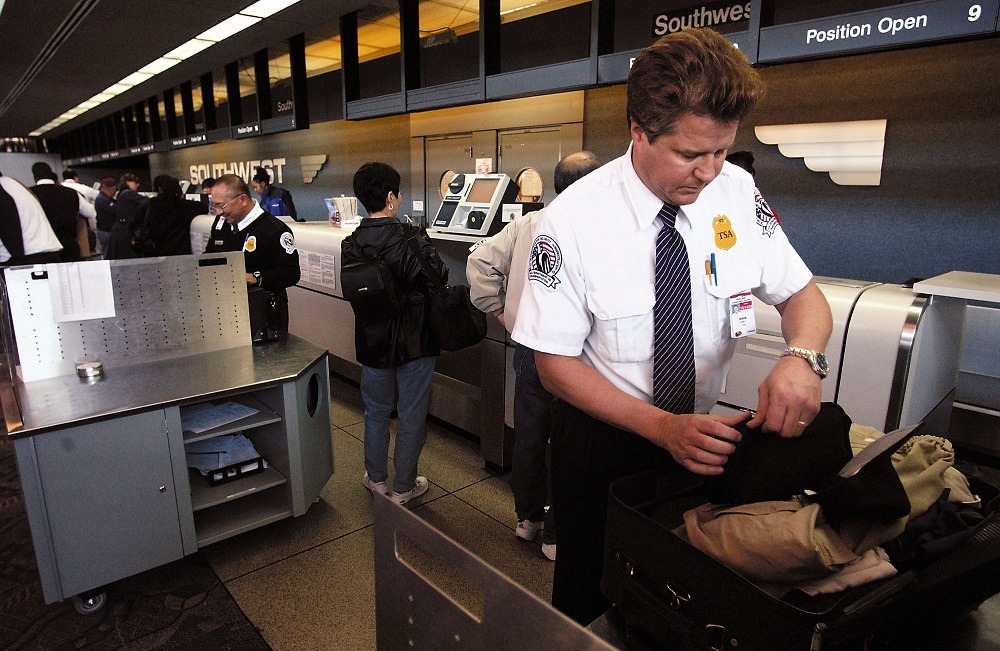 PreCheck expedites travelers who have submitted to a background check. | David Paul Morris/Getty Images
PreCheck expedites travelers who have submitted to a background check. | David Paul Morris/Getty Images
As Condé Nast Traveler explains, “A major aim of the post-9/11 overhaul was to harness better intelligence and more sophisticated pre-screening to separate the ‘known’ travelers from those who might warrant more scrutiny.” Officials created a “known traveler” program with TSA PreCheck.
PreCheck gives expedited treatment to travelers who voluntarily submit to a background check. It sounds like a great idea. But as Traveler notes, “Credit for this should really should go to Customs and Border Protection.” That agency “got there first with its Global Entry fast-track screening for arriving passengers, which showed the TSA how this could be done without invading people’s privacy.”
Next: The government didn’t always carry responsibility for airport security.
3. The government took responsibility for airport security away from private companies
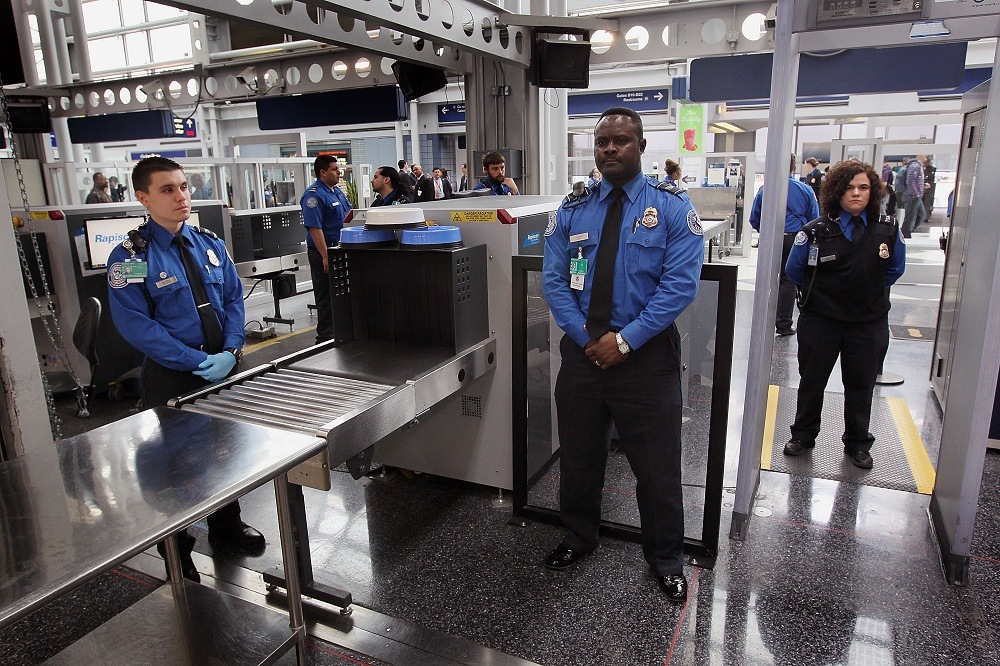 It put the government in charge of airport security. | Scott Olson/Getty Images
It put the government in charge of airport security. | Scott Olson/Getty Images
Airports today have tons of security personnel. But Condé Nast Traveler reports that on 9/11, “there were fewer than 20,000 airport screeners.” And most of them were “poorly-trained, minimum-wage contract workers who were hired by the airlines.”
The publication adds, “One of the very first responses from the government was to kick the airlines off the security beat, and to put the government in charge — that’s what gave us the TSA.” Now, the TSA has about 42,000 screeners, all federal employees. Yet the system isn’t perfect. And screeners do miss weapons at what Traveler characterizes as “a disturbingly high rate.”
Next: The TSA pays attention to these two important things.
4. The agency inspects bags and screens people
 They know what to look for to keep travelers safe. | Paul J. Richards/AFP/Getty Images
They know what to look for to keep travelers safe. | Paul J. Richards/AFP/Getty Images
TSA agents consider two important things as they try to keep travelers safe. As The Huffington Post explains, “TSA employees inspect bags for banned items and screen passengers for suspicious behaviors.” In other words, they scrutinize two things that never really got a whole lot of attention before 9/11.
TSA agents look out for things like nervous behavior from travelers. But we have to imagine that it’s difficult to tell when somebody’s anxious because they’re plotting something — or when they’re anxious because they have to go through stressful security screenings.
Next: Many relatively normal behaviors can get you in trouble with the TSA.
5. You can get in trouble for a wide array of behaviors and traits
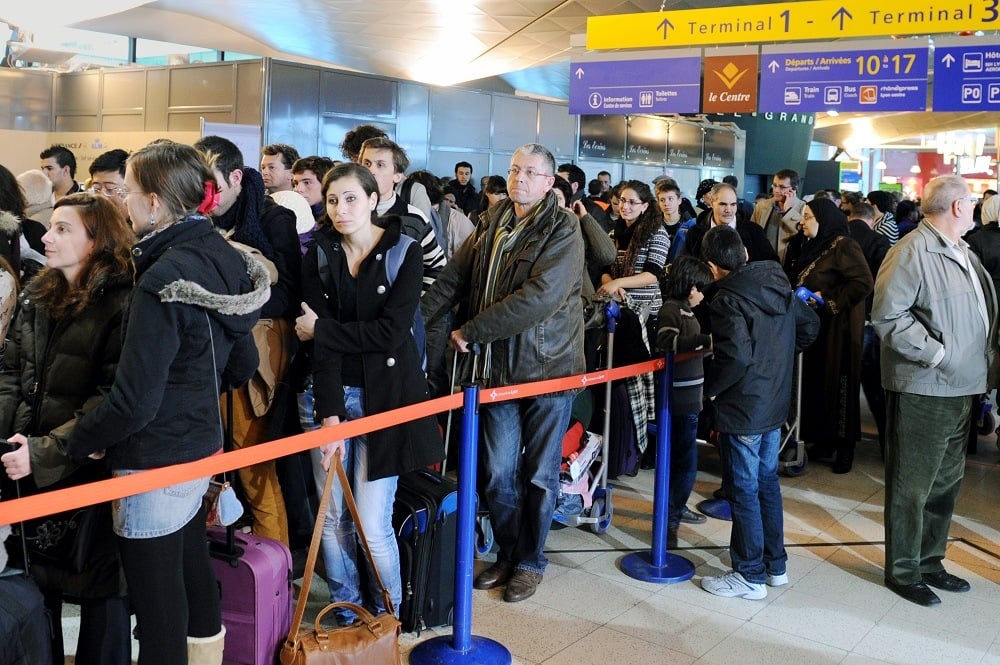 They recognize suspicious signs. | Philippe Merle/AFP/Getty Images
They recognize suspicious signs. | Philippe Merle/AFP/Getty Images
The Post reports that airports have screened for potential hijackers since 1969. In 1969, the FAA developed a profiling system to use in conjunction with detectors. But what’s new since 9/11 is the very broad list of behaviors and traits, obtained by The Intercept, that the TSA looks out for in travelers.
TSA agents look for “exaggerated yawning.” They also look out for travelers who are either “gazing down,” or have “widely open staring eyes.” Another red flag? A “face pale from recent shaving of beard.” They also don’t like to see “rubbing or wringing of hands.” And you may look suspicious if you’re “wearing improper attire for location.” Some of those traits, however, sound like they’d be common among tired or disoriented travelers. That doesn’t exactly inspire confidence in the agency’s methods.
Next: After 9/11, airports stepped up their technology.
6. Airports have better technology to screen for weapons
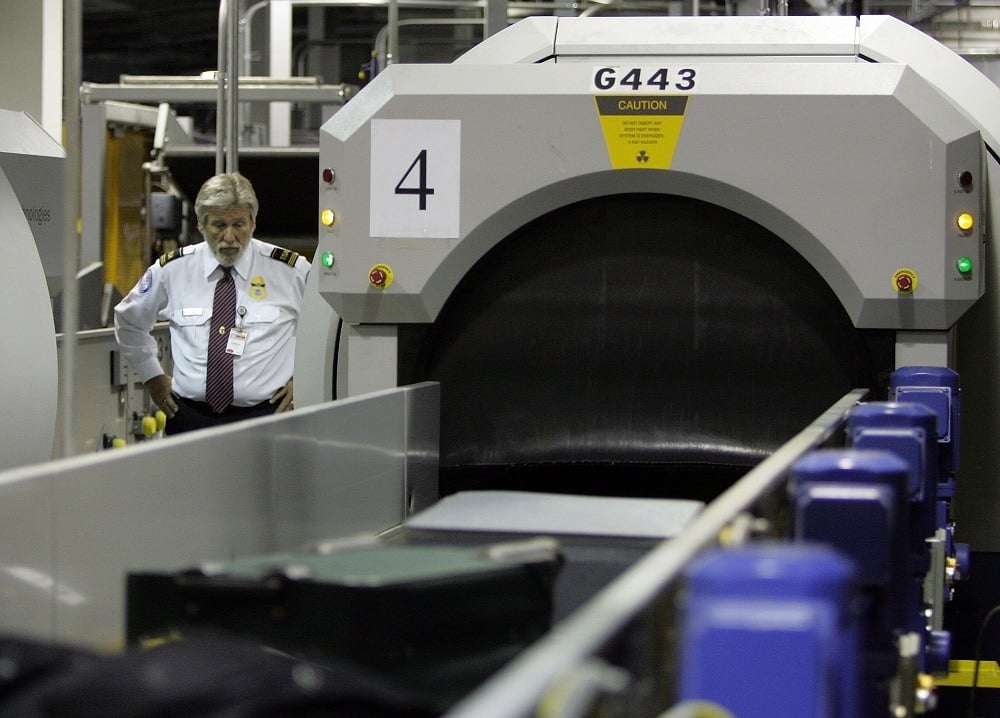 Technology has improved since 9/11. | Justin Sullivan/Getty Images
Technology has improved since 9/11. | Justin Sullivan/Getty Images
Another crucial step in improving airport security post 9/11? Equipping airports with better screening technology. Condé Nast Traveler reports that before 9/11, most checked luggage “went straight onto the plane without being scrutinized for explosives.”
But after 9/11, airports installed detection machines in their lobbies. And together with airlines, the airports spent hundreds of millions of dollars to build underground bag screening systems. Those systems screen all the bags that travelers drop off at check-in.
Next: Airports also got new machines to do this.
7. They’ve also gotten new technology to screen people
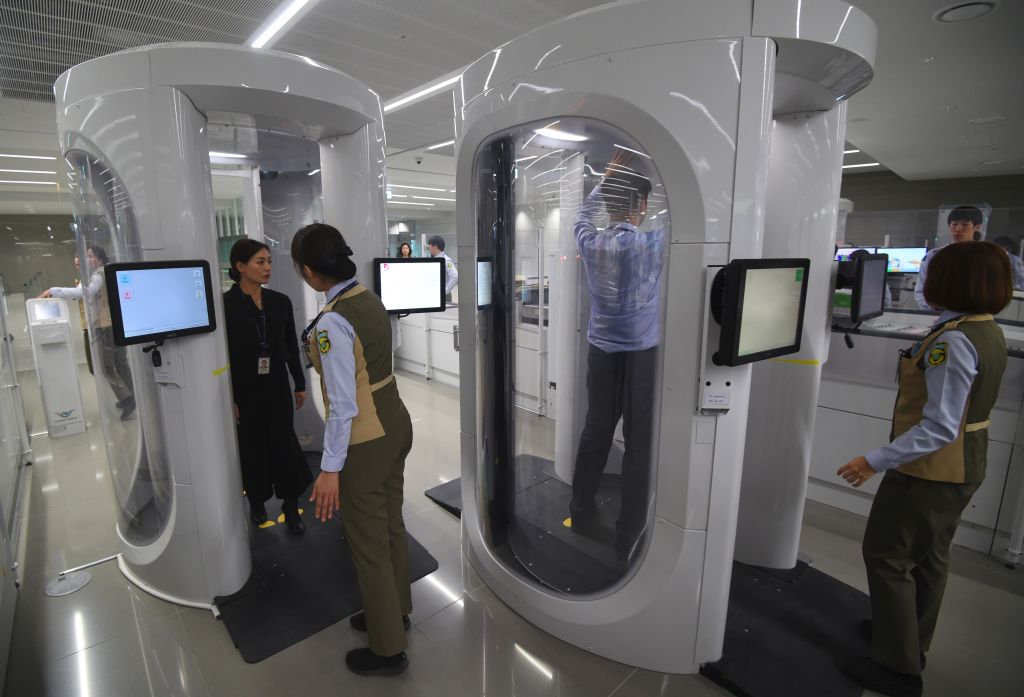 People are still worried about the body scanners. | Jung Yeon-Je/AFP/Getty Images
People are still worried about the body scanners. | Jung Yeon-Je/AFP/Getty Images
Condé Nast Traveler reports that airports quickly built efficient systems for screening baggage. But “the machinery to screen people has proved more of a challenge.”
The TSA had to scrap its first generation of controversial body-scanning machines. Additionally, the agency insists that the current machines are safe, even for frequent travelers. But some people still worry about the health effects of exposure to radiation at airport security.
Next: After 9/11, the TSA got to set its own rules.
8. The TSA sets the rules on what you can take through airport security
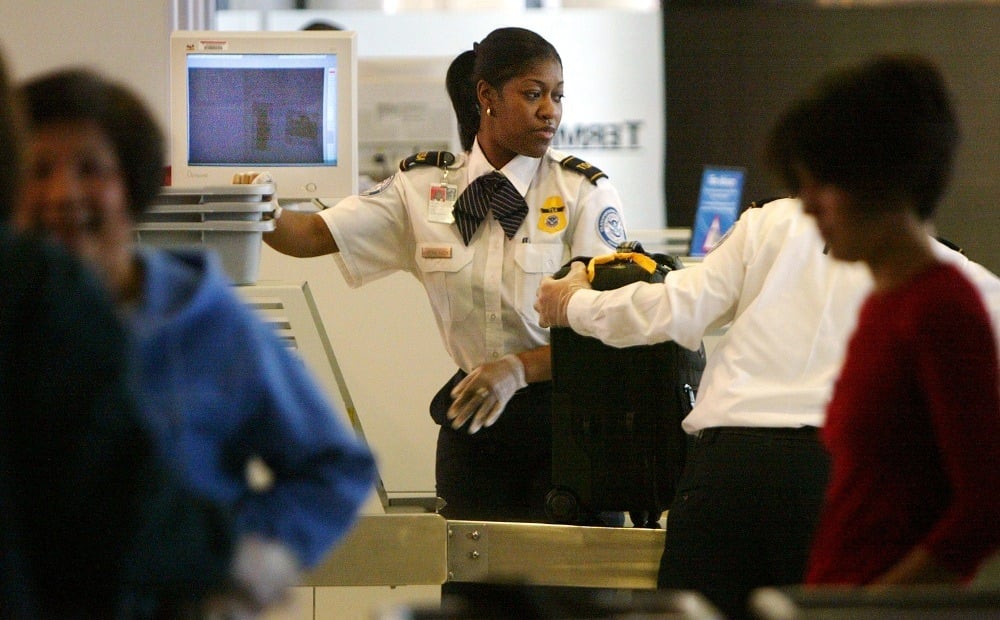 The rules have changed a lot since 9/11. | Mario Tama/Getty Images
The rules have changed a lot since 9/11. | Mario Tama/Getty Images
All travelers know that the TSA has extensive rules on what you can and can’t take through airport security. (Yet that doesn’t stop some people from trying to get through with some pretty bizarre baggage.) But the rules offer a pretty striking example of how much 9/11 changed things.
The Huffington Post reports that before the TSA was established, “you could bring blades up to 4 inches long aboard a plane. The Federal Aviation Administration did not consider them menacing.” Plus, most local laws didn’t prohibit them. Yet you can’t carry them onboard anymore. Baseball bats, box cutters, darts, and scissors were also allowed through airport security. But the TSA prohibits them now.
Next: The agency has changed its stance on liquids over the years.
9. The agency banned — and then limited — the liquids you can carry on board
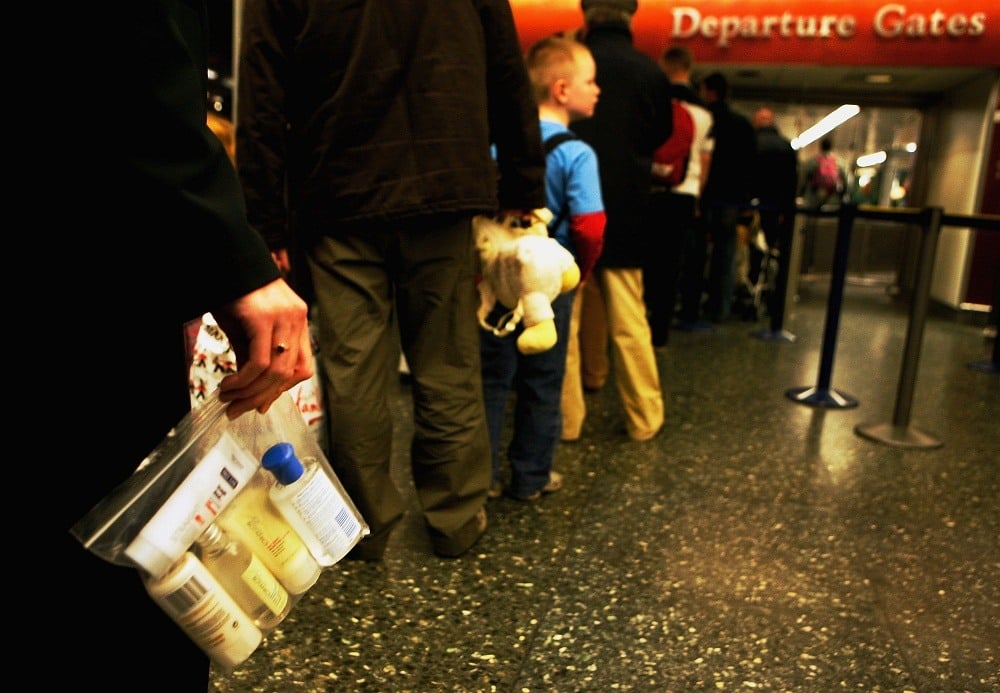 The full ban was quickly dialed back. | Daniel Berehulak/Getty Images
The full ban was quickly dialed back. | Daniel Berehulak/Getty Images
The Huffington Post also reports that in 2006, the TSA briefly banned travelers from packing any liquids in their carry on baggage. Fortunately, that rule didn’t last long. But a few months later, the agency came up with its infamous 3-1-1 rule.
The Post explains, “TSA amended the rule and allowed passengers to carry on liquids, gels and aerosols in containers of 3.4 ounces or less in a single, clear, resealable 1-quart plastic bag.” The rule remains in place today. (Even if some travelers have found ways to get around it.)
Next: In a post-9/11 world, flying takes a lot more of your time.
10. All the rules require travelers to get to the airport a lot earlier
 Security takes more time now. | Spencer Platt/Getty Images
Security takes more time now. | Spencer Platt/Getty Images
Many travelers remember that in the days before 9/11, you didn’t have to arrive at the airport multiple hours before your flight was scheduled to depart. Those days have long passed.
As The Huffington Post notes, “Accounting for the added time to screen for banned items and possible enhanced security now requires travelers to get to the airport hours earlier than they did before Sept. 11.”
Next: Americans’ attitudes toward this practice has changed after 9/11.
11. We’ve all become OK with racial profiling
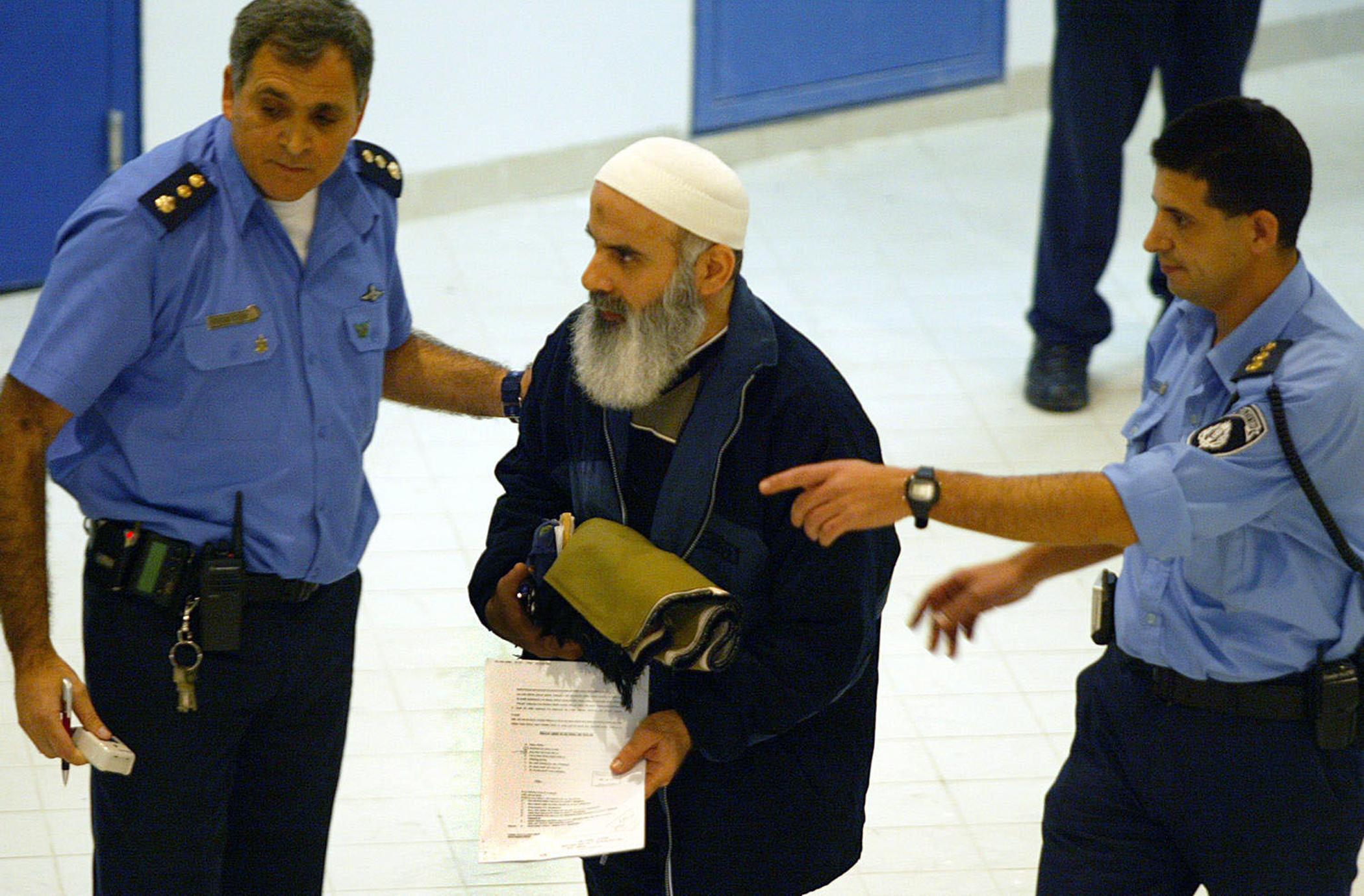 Americans seem to accept profiling at the airport. | Yoav Lemmer/AFP/Getty Images
Americans seem to accept profiling at the airport. | Yoav Lemmer/AFP/Getty Images
When it comes to airport security, many Americans famously approve of racial profiling. That may come as a surprise to people concerned about our attitudes toward civil liberties, democracy, and the racism that persists in American society.
But the poll results really shouldn’t surprise anyone. Since shortly after 9/11, Gallup polls have shown that Americans condone racial profiling at the airport. (Even if they object to it, at least in theory, in other situations.)
Next: This scary outcome has only been a possibility since 9/11.
12. You can land on a terrorist watch list
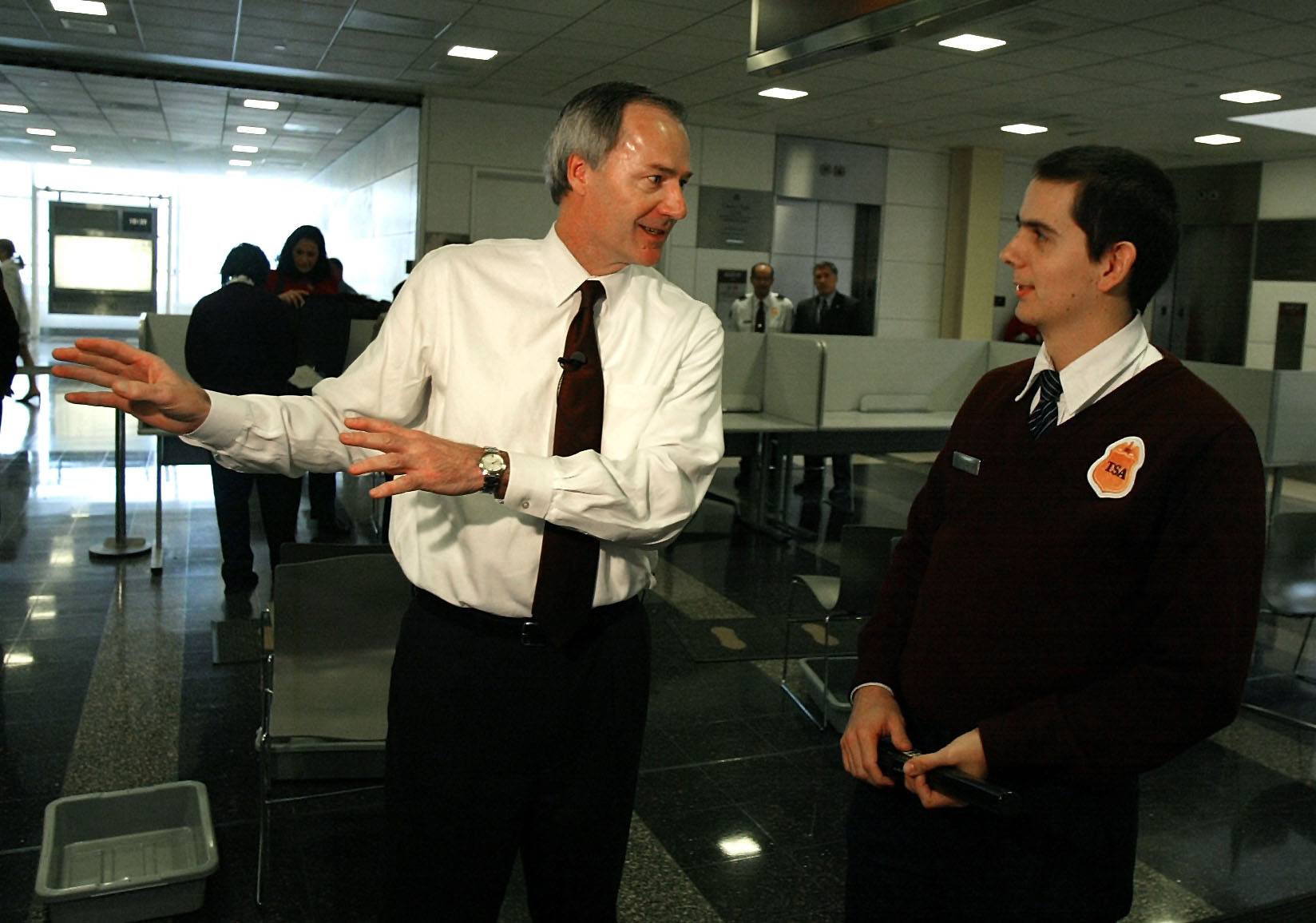 If you even make jokes about terror, you might end up on a watch list. | Mark Wilson/Getty Images
If you even make jokes about terror, you might end up on a watch list. | Mark Wilson/Getty Images
Everybody knows not to make jokes about bombs while wait to board the plane. But people have also started to wonder what they can Google or post on Facebook without landing on the terrorist watch list
That list constitutes a new development since 9/11. (Wired notes that it actually began in 2003.) As The Huffington Post explains, the government has “secret rules for putting individuals on its main terrorist database, as well as the no fly list and the selectee list, which triggers enhanced screening at airports and border crossings.”
Next: Airlines have made this change on their planes.
13. Cockpits have been sealed off
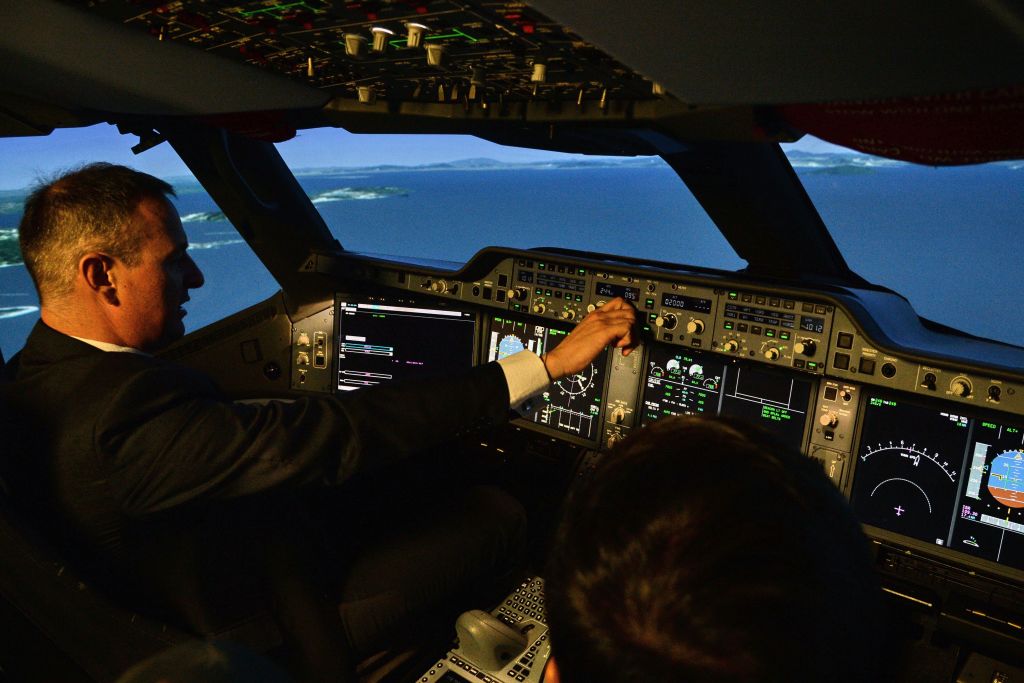 Safety is much higher for the cockpits. | Roslan Rahman/AFP/Getty Images
Safety is much higher for the cockpits. | Roslan Rahman/AFP/Getty Images
Another major change since 9/11 is visible not at the airport, but on your plane. In the past, people could come and go from the cockpit easily. But that capability doesn’t exist anymore.
Condé Nast Traveler reports that pilots now “remain locked behind impregnable doors for the duration of the flight (with obvious exceptions for restroom breaks, but flight attendants are trained to protect the cockpit during those intervals).”
Next: You’re more likely to see one of these officials on your flight.
14. There are more air marshals
 The number has increased dramatically since 9/11. | iStock/Getty Images
The number has increased dramatically since 9/11. | iStock/Getty Images
Condé Nast Traveler adds that the government has also increased the size of the air marshal workforce. That workforce “had dwindled to a minuscule number of guards — fewer than 100 — by 2001.”
But unlike some of the other changes to airport security, the government has less to show for this one. As Traveler explains, “the program has reportedly been plagued by low morale and high attrition, although the details of just how many are employed in this job are classified (it’s estimated to be more than 5,000).”
Next: Pilots can now carry these onto their aircraft.
15. Pilots can carry guns
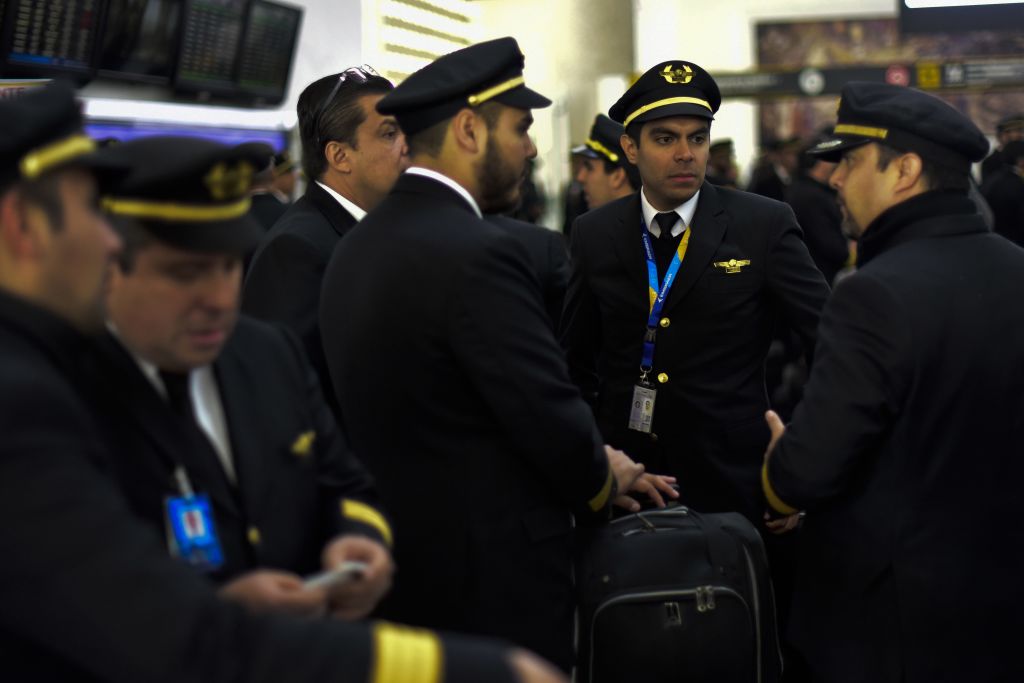 Pilots can acquire permits to carry guns. | Pedro Pardo/AFP/Getty Images
Pilots can acquire permits to carry guns. | Pedro Pardo/AFP/Getty Images
According to Condé Nast Traveler, pilots “have picked up some of the slack” in protecting their aircraft through the Federal Flight Deck Officer program. This program permits them to carry guns after they’ve undergone proper training.
According to an airport screening manual leaked by the TSA, these pilots receive training by the U.S. Marshals Service. They can carry TSA-issued firearms onto planes. However, these pilots can pass through the airport without a regular security screening only after they present their credentials and photo ID.
Signature Flight to purchase fuel facility at Santa Barbara Airport
Signature Flight Support is set to purchase and operate the only existing self-service fuel facility at the Santa Barbara Airport (SBA) in Santa Barbara, California, US.
The Self-Service AvGas 100LL facility is set to offer an additional option to recreational pilots for refuelling their aircraft.
Signature’s self-service customers will get benefits such as complimentary parking on its transient ramp for the day of fueling and pedestrian access to and from the airport operations area from its fixed-base operator facilities.
“Signature noted that the addition of the new self-service fuel facility at SBA is the 14th installation within its North American network.”
Signature Flight Support president and chief operating officer Maria Sastre said: “Signature’s thrilled to be able to offer pilots another opportunity, in addition to Signature’s Weekend TakeOff AvGas discount programmes, to save on their fuel purchases.
“We’re confident that this additional self-service AvGas facility further expresses our commitment to both the local Santa Barbara pilot community and general aviation community as a whole.”
Signature Flight Support is a BBA Aviation company. It has operated at the Santa Barbara airport for 20 years and continues to provide its service to all pilots frequenting the facility.
Signature noted that the addition of the new self-service fuel facility at SBA is the 14th installation within its North American network.
Located eight miles north-west of downtown Santa Barbara, SBA serves more than 750,000 passengers a year.
Featuring two 4,000ft-long parallel general aviation runways, the airport hosts a 20,000ft2 terminal building.
What Ontario International Airport is doing to improve foreign travelers’ experience

An artist rendering of the Ontario International Airport international terminal. The new terminal is in the initial phase. (Courtesy artist rendering) By lmarquez | Inland Valley Daily Bulletin
February 3, 2018 at 8:17 pm
Foreign travelers to Ontario International Airport disembark much like local travelers did before the modern terminals were opened two decades ago.
International passengers must exit the plane down a staircase, carry-on suitcase in tow. They make their way off the tarmac to a modular building.
This was considered behind-the-times for domestic passengers, which is why new terminals were opened in 1998. In 2018, the experience is so outdated it simply doesn’t meet requirements of modern-day passengers, said Ontario International Airport Authority CEO Mark Thorpe.
“Customers today expect jet bridges. It’s an inferior service to go down to the FIS facility,” said Thorpe, referring to the federal inspection services facility.
1 of 6
An artist rendering of the Ontario International Airport international terminal. The new terminal is in the initial phase. (Courtesy artist rendering)
In January, the authority’s commissioners agreed to solicit design and construction proposals that will ultimately replace the 44,000-square-foot federal inspection facility and international terminal. The effort is part of the authority’s overall goal, since regaining local control November 2016, to improve the customer experience at Ontario Airport.
Construction is anticipated to begin this year and wrap up in the first quarter of 2020, according to a report to commissioners. Based on preliminary costs, the replacement project could cost between $70 million to $80 million.
“We won’t know until the design bids come in,” he said.
The authority is still exploring a range of funding options for the project, “and our goal is to find revenue streams that are the least amount of burden on the airlines,” said Atif Elkadi, senior director of marketing, communications and external affairs for Ontario airport.
The current facility is a detached building west of the twin terminals. Officials envision building the future facility to the east, connecting it to Terminal 2.
Renderings depict a sleek facility within the center of a multi-level building. The three-story building would include an airline lounge on the top floor, a departures concourse on the second and the FIS and arrival hall on the lower level.
“Without building an entirely new terminal, we’ll be able to provide that world-class experience that international passengers expect,” Thorpe explained.
As of now, departures via an international carrier such as Volaris or soon-to-be carrier China Airlines leave from Terminal 2, but all international arrivals must pass through the FIS facility. Then airport staff have to tow the aircraft back to the terminal, an unneeded expense and waste of time, Thorpe said.
The new building would allow for international carriers to arrive and depart from the same gates. Thorpe said the authority considered four different iterations of the proposal and felt this was the best for ONT.
“All other options would have required a cannibalization of too much of our revenue-generating facilities in the terminals,” Thorpe said. “This was a way to accommodate this traffic without cutting into revenue-generating space.”
According to the report, international travelers would enter security through Terminal 2. Once they’ve cleared security, international passengers would head to the eastern end of the terminal where they would enter the federal inspection services facility. The new building would have food and retail options, something the current one doesn’t offer.
It would accommodate three to four wide-body gates, less than the nine the current facility can hold, but still suitable for the airport’s projected growth.
“One of the key points for us is that we’ll have wide-body jet-bridge capacity, which is important for flights from Asia and flights from Europe,” Thorpe said.
The current building dates to 1994, prior to the security standards set after the 9/11 terrorist attacks. Replacing the facility would help the authority meet new security standards implemented by U.S. Customs and Border Protection in 2017. Under those standards, passengers must pick up their checked baggage before getting in line for immigration inspection.
In August, the authority ordered two boarding ramps that could accommodate wide-body aircraft. Ramps are a safer option than purchasing staircases, Thorpe said.
Ontario’s governing body in a special meeting Feb. 2, approved a resolution that would make a little more than $1 million in technology-related improvements before China Airlines begins operations March 25.
As part of the vision for the replacement international terminal, arriving passengers would clear customs and exit the facility, heading west to catch any domestic flights in Terminal 2 or exit the terminal to the north, where there would be passenger pickup curbside, a shuttle or other ground transportation.
Commissioner Julia Gouw asked Thorpe during the Jan. 23 meeting if Ontario would outgrow this facility in a few years.
“I hope so,” Thorpe replied.
Eventually, Ontario will have the capacity for a new passenger terminal, he added.
The international terminal would be designed to handle 800 passengers per peak hour, a 14-percent increase compared to the existing facility which handles 700 passengers per peak hour.
“This is a smart way to bridge the gap from where we are today to that need for a new terminal. If we built it today, we’d be overbuilding,” Thorpe said.
“This allows us to accommodate a significant amount of growth and then establish a market that would justify an expansion.”
Because this is a replacement project, airport officials said a whole new environmental report would not be needed.
As Commissioner Curt Hagman points out, the replacement international terminal will only be a temporary facility that can be used for the next two to seven years. The time period will depend on how fast the airport grows. Ideally, he’d like to see passenger traffic grow 10 percent from the previous year.
Building a permanent, state-of-the-art-facility would require a five-year build-out process, a luxury ONT doesn’t now have due to a pressing need for an updated building.
“This FIS facility will put us on the radar,” Hagman said. “We just can’t do things fast enough, unfortunately, and there’s a lot of catching up that we have to do.”
Drone has frightening apparent close call with jet
Too close for comfort:
Ad Duration00:00
PAUSECurrent time00:13Seek00:00
Duration00:20TOGGLE MUTEVolume SETTINGS
TOGGLE FULLSCREEN
EMBED </>MORE VIDEOS
The FAA has launched an investigation after a drone had an apparent close call with a jumbo jet.
Danny Clemens
Saturday, February 03, 2018 01:32PM
HENDERSON, Nev. —
The FAA has launched an investigation after a drone had an apparent close call with a jet near McCarran International Airport.
Video circulating online shows the drone hovering as what appears to be a Frontier Airlines jet flies almost directly beneath it.
It’s not clear who shot the footage or when it was taken, but ABC News has confirmed that it was taken in the vicinity of McCarran.
FAA regulations generally prohibit drone operators from flying above an altitude of 400 feet, near other aircraft or in controlled airspace like the area near an airport. There are, however, instances in which pilots can apply to have those rules waived under specific circumstances. It’s not clear under which regulations this pilot was flying.
According to the agency’s website, flying a drone in a manner deemed reckless could lead to fines or criminal action.
In addition to the FAA, the local police department is now investigating the incident and the FBI “was made aware of it as well,” according to ABC affiliate KTNV-TV.
Drone U, a company that offers drone flying and photography services, posted the video to Facebook along with a message condemning what they called a “reckless and criminal act.”
“Drone U and it’s [sic] members work tirelessly in making our skies safe for all users of the National Airspace System. This pilot’s actions not only endangered the flying public, but has the potential to discredit an entire [Small Unmanned Aircraft System] industry,” the company wrote. “It is the opinion of Drone U and it’s [sic] members that the pilot receive swift and just punishment for this example of irresponsible and reckless flight.”
Some online viewers have speculated that the footage could be fake, with the possibility raised that the footage was crafted using shots from a video game.
TSA Updates Security Rules Leading into the Holidays
By Pedro Pla, on Dec 04, 2017
The Transportation Security Administration (TSA) is taking measures to ensure that the holidays are merry, bright and safe for the 100 million American passengers who are expected to travel by plane this year. The TSA has announced some changes regarding its screening procedures going into the busy holiday travel season. The biggest change that travelers are likely to notice is that all electronic items larger than a cellular phone must now be removed from carry-on bags and placed into bins for X-ray screening.
People who travel regularly are probably already familiar with this procedure when it comes to laptops. However, it is being expanded to include a variety of electronics. This means that anyone packing their bags for a trip during the holiday season should be prepared to remove items like Kindles, iPads, cameras and more. The additional screening rules are being applied at all airports throughout the country.
The holiday season is a time when passengers should pay attention to any gift items that they plan to bring with them when they board flights. Some items that may seem like harmless gifts may actually trigger security issues in TSA screening lines. Objects with sharp points or liquid components could raise red flags or violate TSA safety requirements.
For instance, gift items like snow globes or corkscrews may need to be confiscated or forfeited before a passenger can get on a plane. Even something as innocent as a culinary gift could cause a headache in an airport security line. While baked goods like cakes and pies are permitted, jars of jams and jellies that exceed the TSA’s limit for liquids are not. The TSA recommends that passengers leave gifts unwrapped before placing them inside carry-on bags.

Pedro Pla is co-founder of GET.com. He has been around the globe several times and considers collecting air miles and points from credit cards to be a hobby, if not, an obsession. Email: p@get.com.
Firearms seized by TSA surpasses 2016 numbers with TPA top of the list
BY JESSICA DE LEON jdeleon NOVEMBER 20, 2017 09:57 PM
With the busiest week for travel in the nation underway, the number of firearms seized by Transportation Security Administration officers at Florida airports has already surpassed the 2016 total, the federal agency announced Monday.
In Florida this year, TSA officers have seized 440 firearms at security check points as of Monday, according to statistics released by TSA. Last year, a total of 411 firearms were seized at security checkpoints in Florida.
At the top of the list is Tampa International Airport.
Airport expansion on the horizon?
Friday, November 3, 2017
Jason E. Silvers
 Pictured is the south end of the runway of the Fort Scott Municipal Airport. A proposal to expand the runway is currently in the preliminary stages.
Pictured is the south end of the runway of the Fort Scott Municipal Airport. A proposal to expand the runway is currently in the preliminary stages.
Jason E. Silvers
Continued growth is on the horizon for the Fort Scott Municipal Airport.
The airport has recently undergone some improvements and there are others on the slate in the coming years. In recent months, city officials learned of an economic development proposal that calls for new businesses at the airport, as well as an expansion and extension of the airport runway.
One recent project involved rehabilitation of the concrete apron near the fuel system at the airport. That project, at a cost of about $690,000, was funded by a 90-10 matching grant that included Kansas Department of Transportation and Federal Aviation Administration money and city funds. It involved rebuilding concrete on the apron ramp area.
Another project involved replacement of the airport’s Automated Weather Observation System. It was funded by a 90-10 matching grant with KDOT. Project are required to meet FAA requirements and are dependent on available funding, Airport Manager Kenny Howard said.
“It will benefit pilots,” he said of the new AWOS system. “They will have true weather right on the field.”
Aaron Phillips, a local spray plane pilot, has plans to build an additional hangar next to his current hangar at the airport. The new building will be used for storage of supplies and built at “no cost to the city,” Howard said.
Howard said a project to expand the runway an additional 2,500 feet and widen it an extra 12 feet on each side is in the “preliminary planning stages.” He said city officials planned to have a telephone conference within the next 30 days with the engineering design firm of Olsson and Associates, the city’s new airport consultant, to discuss the project. There is also a plan to meet soon with FAA representatives about the airport’s layout plan.
“So we can come to them with a sound plan,” Howard said.
The proposal for the runway extension includes topographic surveys and drillings, as well as an aeronautical survey being done by Olsson and Associates. The surveys are part of an environmental assessment that must be done prior to the project. The surveys have been funded by city funds and “some private funding,” Director of Economic Development Rachel Pruitt said.
“The surveys have to be done to see if we can even extend the runway,” Pruitt said.
City commissioners approved a master agreement and work orders for the surveys with Olsson and Associates in August.
City officials have been searching and applying for various state and federal grants, as well as other financing options that can be used to help fund projects.
“We’re trying to do it without raising any taxes,” Howard said.
Howard said the airport must have 500 operations – takeoffs and landings – per year “to get the runway expansion.”
Pruitt said so far, city officials have applied for two state grants – one through the KDOT Aviation division and another through KDOT economic development.
“We’re also applying for a federal grant for the whole project,” she said. “This a really in-depth type of project.”
The runway expansion is part of an economic development proposal that also involves bringing a new jet repair station to the airport. Spectra Jet, Inc., a certified aircraft repair station based in Springfield, Ohio, has come to Fort Scott as part of its expansion. After researching airports, Pruitt said the city wanted to take advantage of an “MRO” (Maintenance, Repair and Overhaul) opportunity.
Part of the proposal with Spectra Jet is to enlarge the runway, which is currently 4,400-feet-by-75 feet. It would need to be expanded to 6,100-feet-by-100-feet for this project. The company performs mechanical work on Lear and Challenger jets. The runway expansion is needed to house those models of aircraft.
Howard said Spectra Jet has already brought some equipment in to the airport but no personnel as of yet. The proposal is for Spectra Jet to relocate eight jet engine mechanics here.
Pruitt said preliminary estimates show the proposal to extend the runway would cost about $4.3 million, while the widening of the runway would cost about $3.7 million.
Elon Musk’s brilliant email rule at Tesla
/arc-anglerfish-syd-prod-nzme.s3.amazonaws.com/public/RMW23D5BOJDVXDKEEB4XKBOSXQ.jpg)
Elon Musk is famed for his unconventional management style. Photo / Getty Images
news.com.au
31 Aug, 2017 2:43pm by: Frank Chung
Elon Musk is famed for his unconventional management style.+
The South African-born entrepreneur behind companies including Tesla and SpaceX has described himself not as a micromanager but a “nano-manager”, news.com.au reports.
Musk works about 100 hours per week at the electric carmaker and involves himself in even the tiniest aspects of the business – and this email, sent by Musk to Tesla employees several years ago, shows how.
In the email, published by Inc Magazine, the eccentric billionaire outlines his approach to communication inside the company.
“There are two schools of thought about how information should flow within companies,” he writes. “By far the most common way is chain of command, which means that you always flow communication through your manager. The problem with this approach is that, while it serves to enhance the power of the manager, it fails to serve the company.
“Instead of a problem getting solved quickly, where a person in one dept. talks to a person in another dept. and makes the right thing happen, people are forced to talk to their manager who talks to their manager who talks to the manager in the other dept.
who talks to someone on his team. Then the info has to flow back the other way again. This is incredibly dumb. Any manager who allows this to happen, let alone encourages it, will soon find themselves working at another company. No kidding.
“Anyone at Tesla can and should email/talk to anyone else according to what they think is the fastest way to solve a problem for the benefit of the whole company. You can talk to your manager’s manager without his permission, you can talk directly to a VP in another dept., you can talk to me, you can talk to anyone without anyone else’s permission. Moreover, you should consider yourself obligated to do so until the right thing happens. The point here is not random chitchat, but rather ensuring that we execute ultra-fast and well. We obviously cannot compete with the big car companies in size, so we must do so with intelligence and agility.
“One final point is that managers should work hard to ensure that they are not creating silos within the company that create an us vs. them mentality or impede communication in any way. This is unfortunately a natural tendency and needs to be actively fought. How can it possibly help Tesla for depts. to erect barriers between themselves or see their success as relative within the company instead of collective? We are all in the same boat. Always view yourself as working for the good of the company and never your dept.”
Inc Magazine’s Justin Bariso argues that while he’s a “huge fan” of the message the email conveys, it’s “easier said than done”. “Communication that is forced to go through the ‘proper channels’ is a recipe for killing great ideas and burying the feedback that a company needs to thrive,” Bariso writes.
“There’s only one problem with Musk’s proposed solution: it’s extremely difficult to cultivate in the real world. Of course, leaders have to set the example. That means looking beyond individual achievements and key performance indicators, which takes courage, insight, and emotional intelligence. It means making yourself available to hear as many voices as possible.”
Follow @WeTrainAirports





